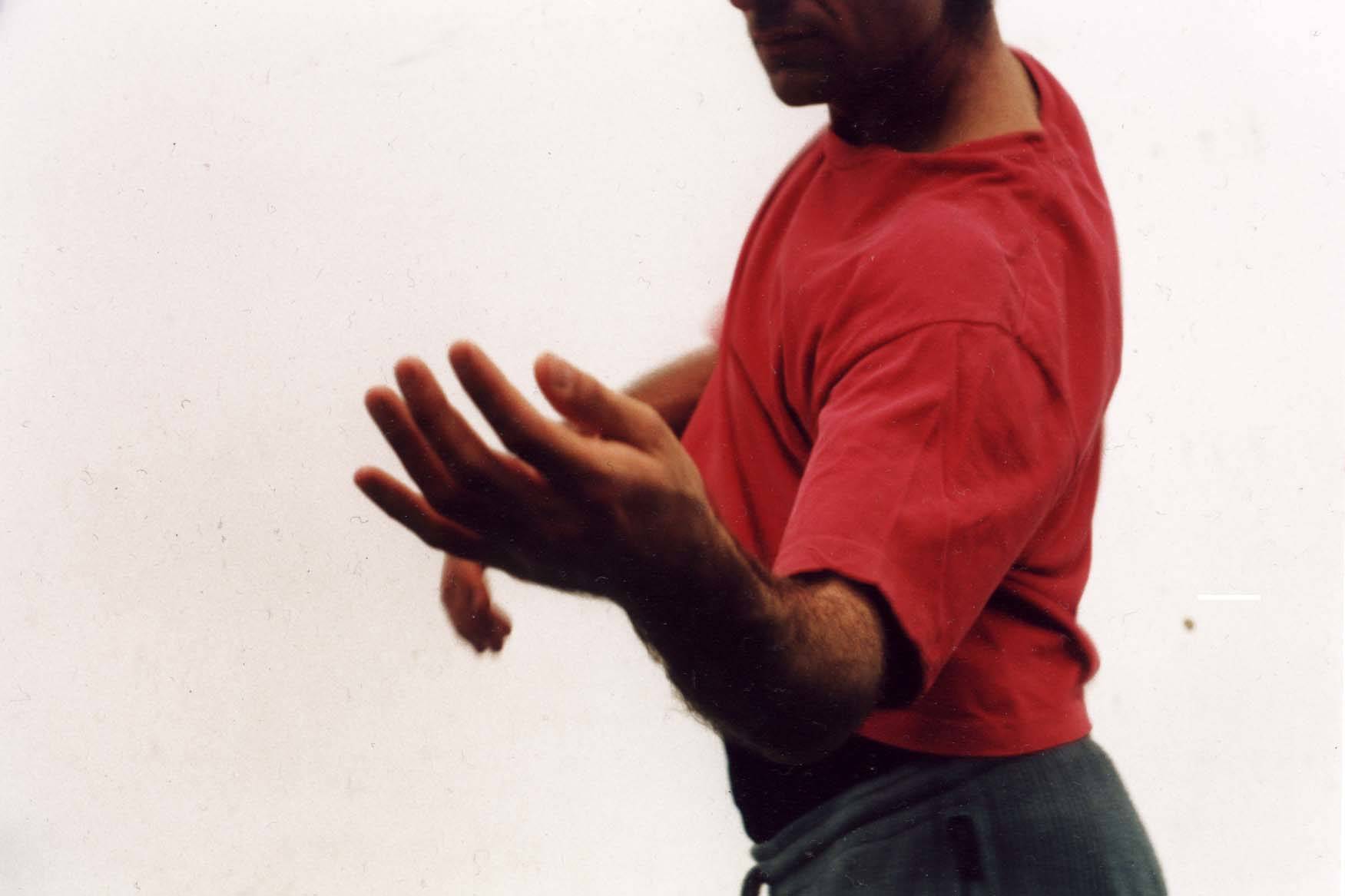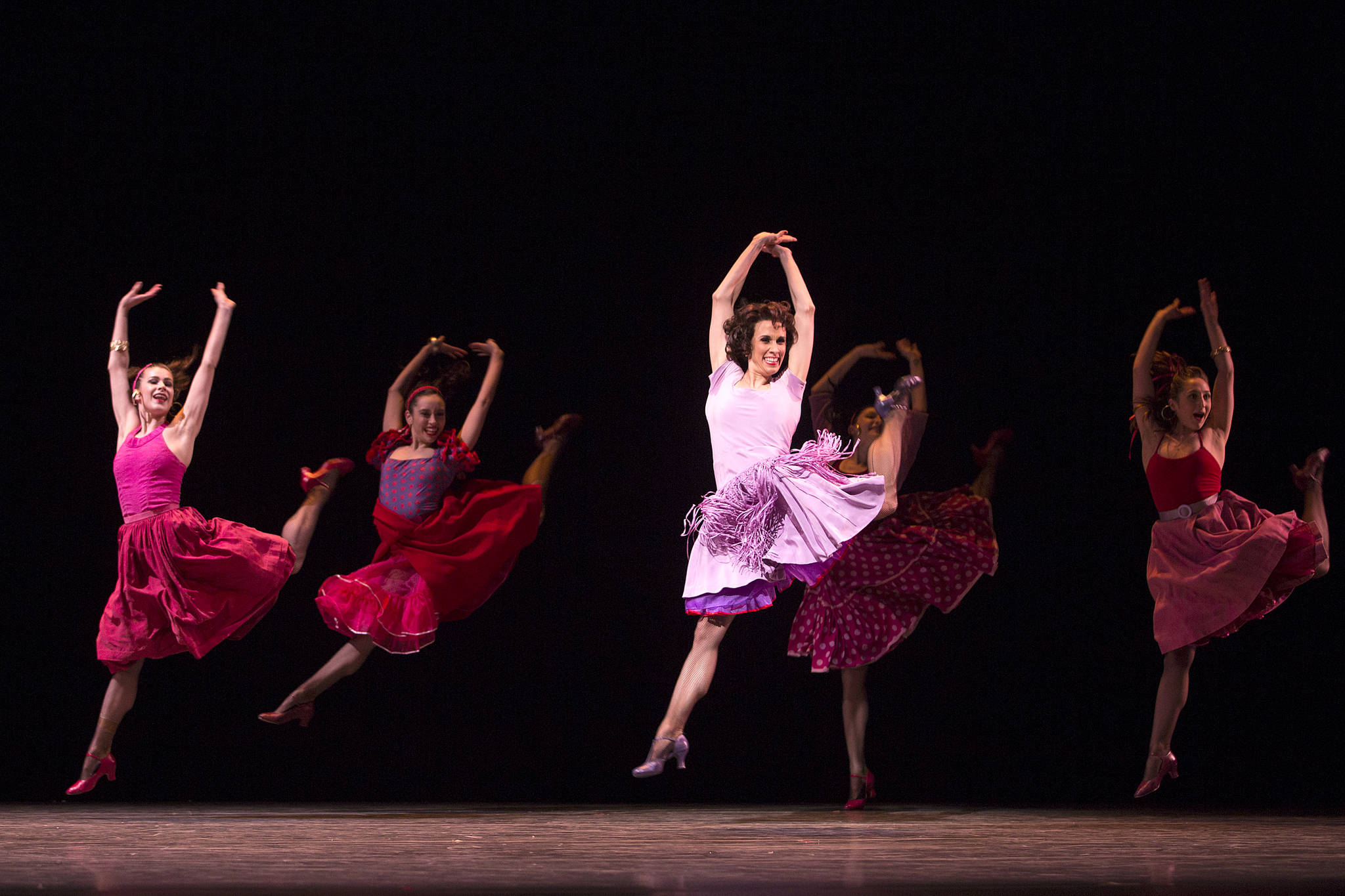In Freya Wormus’ new dance, getting off the ground takes a great deal of effort. Instead of leaping into the air, Wormus and her three other dancers literally climb the wall of a yoga studio, hauling themselves up with straps and hanging there by their fingertips. In one of the opening sequences, Wormus uses the loop of a strap to cantilever herself out over the floor, like the bowsprit of a sailing ship. Then she turns herself upside down and collapses, almost hitting the floor with her head. The piece frequently alternates between the thrill of defying gravity and the danger of letting go.
Wormus and her fellow performers (Julie Andres, Victoria Jacobs, and Alex Martin) sometimes cooperate to reach higher or farther in the space; other times they seem to chafe at the limitations of the equipment, competing for the best vantage point and actually climbing over each other to escape.
It’s exactly those limitations that make this piece so good. The space is relatively small, maybe 20 feet wide, and the straps might reach 10 feet fully extended, so that any arc you could swing along is restricted. And since the straps are attached to a wall rather than a ceiling, there are no long swinging arcs like you see in trapeze work, where entropy creates a more languid feeling. Even in tender moments, as when Martin rocks Wormus in a kind of cradle they’ve woven from the straps, the arc of the movement is short and crisp. And when they use the wall as a partner, swooping down toward the floor and then rebounding off the end of their tether to swing back up again, physics adds an extra flourish to their dynamism.
Even in its most beautiful sequences, the performers aren’t trying to disguise their work—the setup is as important as the payoff. As they untangle the straps, manipulate the buckles and loops, or plug their lines into a new position, it’s like watching the magician explain the trick for us.
The piece is at its weakest when the dancers actually let go and become earthbound again; the energy flags and the movement becomes less innovative. Despite some thoughtfully designed canon sequences, and great support from a rhythmically driving score by Mike Katell, it’s hard not to wait impatiently for them to get back to the business of climbing and falling.








